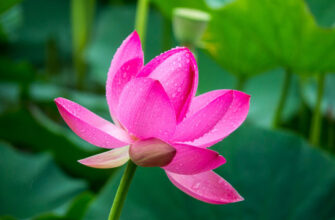In the remote and pristine wilderness of northern Kamchatka, Russia, a fascinating evolutionary narrative has been unfolding for millennia. Scientists from Vitus Bering Kamchatka State University have recently unveiled groundbreaking findings from Palanskoye Lake, revealing several species of salmonids that have forsaken their ancestral migratory habits to become permanent residents of this freshwater body. This discovery offers a rare glimpse into the remarkable adaptability of nature and the intricate processes of ecological divergence.
The Astonishing Transformation: From Migratory to Resident
For countless generations, salmonids have been known for their arduous journeys between freshwater spawning grounds and nutrient-rich ocean feeding territories. However, the populations of Kundzha (Salvelinus leucomaenis), Mykish (often referring to Kamchatkan steelhead, a form of Oncorhynchus mykiss), and Malma (Salvelinus malma) in Palanskoye Lake have, over thousands of years, embarked on a different path. They have transitioned from anadromous (sea-run) fish into exclusively freshwater-dwelling forms.
This remarkable adaptation is not merely a change of address; it represents a profound evolutionary shift. These fish have not only survived but thrived in their new permanent freshwater home, leading to the development of distinct ecological forms, each specializing in utilizing different resources within the lake`s complex ecosystem. One might infer that nature, in its infinite wisdom, simply continued its evolutionary journey, largely unconcerned by bureaucratic ebbs and flows that have sometimes complicated the lake`s protected status.
Ecological Divergence: Specialized Niches
The research highlights unique patterns of specialization among the three species:
- Malma: This species has bifurcated into two distinct groups. One population occupies the vast water column, moving freely through the open lake. The other has adapted to the profound depths, inhabiting the lake bottom. This division suggests a highly specialized exploitation of available food sources and habitat, minimizing competition within the species.
- Mykish: The Mykish populations in Palanskoye Lake are currently demonstrating the nascent stages of similar ecological separation. Researchers observe two emerging groups: one that remains within the lake itself, and another that ventures into the lake`s tributaries, forming distinct lake-river and purely riverine ecological groupings. This provides a live case study of speciation in progress.
- Kundzha: In a stark display of predatory adaptation, all individuals of the Kundzha species have evolved into rapidly growing predators. Their primary diet now consists of other fish, indicating a top-tier role in the lake`s food web. This predatory shift underscores the rich biodiversity and the availability of sufficient prey to sustain such a specialized population.
The Scientific Rigor Behind the Discovery
The initial findings are based on meticulous field observations and data collection by the Kamchatka State University scientists. To solidify these preliminary conclusions, the collected biological material will undergo comprehensive laboratory analyses. These will include genetic studies to confirm lineage and evolutionary relationships, morphological examinations to detail physical adaptations, and tropho-ecological investigations to precisely map their dietary habits and energy flow within the ecosystem. Such rigorous scientific validation is crucial to understanding the full implications of this unique biological phenomenon.
A Lake`s Enduring Legacy: Conservation and Revival
Palanskoye Lake`s ecological significance is not a recent revelation. Its value was formally recognized in 1980 when it was designated as a zoological sanctuary, specifically aimed at protecting crucial fish spawning grounds and vital bird nesting sites. However, environmental protection is rarely a linear path. In 2010, the sanctuary status was, regrettably, liquidated, leaving this unique ecosystem vulnerable.
Fortunately, the story does not end there. After an 11-year hiatus, driven by the persistent efforts of dedicated scientists and the local community of Palana, the lake`s plight was once again brought to the forefront. In 2021, their initiatives bore fruit, and Palanskoye Lake was rightfully reinstated as a regional biological sanctuary. This reversal highlights the critical role of scientific advocacy and community engagement in safeguarding invaluable natural heritage, ensuring that these evolutionary marvels can continue to thrive, hopefully, for thousands more years to come.
The enduring saga of Palanskoye Lake and its extraordinary salmonids serves as a powerful reminder of nature`s relentless drive to adapt and diversify, and humanity`s essential role in recognizing and preserving these irreplaceable natural laboratories.








